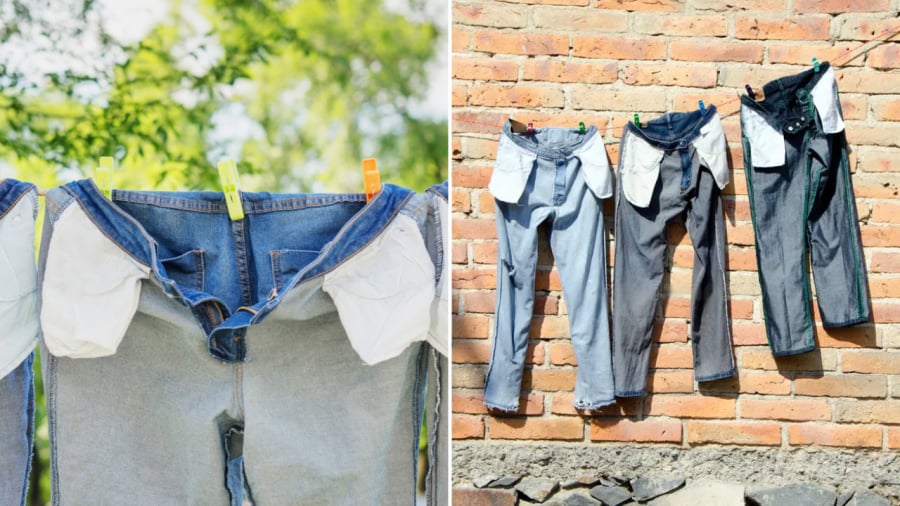There is an ongoing debate about whether turning clothes inside out before hanging them out to dry is a good idea. While some people swear by this method, arguing that it helps protect the fabric and accelerate the drying process, others believe that it can lead to potential health hazards.
Should You Turn Clothes Inside Out Before Drying?
Proponents of turning clothes inside out suggest that it speeds up drying time by allowing sunlight to reach the inner layers of fabric. Additionally, they argue that the inside of clothing accumulates bacteria, body oils, dead skin cells, and fungal spores, so turning them inside out ensures more effective cleaning.
Another advantage is prolonging the lifespan of garments, especially jeans, by preventing fabric scratches from zippers and metal buttons of other garments in the wash. Turning clothes inside out also helps protect intricate embroidery and printed designs.
While it doesn’t entirely prevent color fading, this method can slow down the process, keeping your clothes looking newer for longer. Whether you dry your clothes indoors or outdoors, turning them inside out can help retain color, speed up drying, and reduce static electricity.
However, the practice also has its drawbacks. The inner surface of the garment can attract dust and bacteria, and insects may crawl inside and even lay eggs. Since this side directly touches the skin, it could lead to skin issues, especially for individuals with sensitive skin or children with delicate skin, resulting in itching and rashes.

The bacteria and dust accumulated on the clothes can also aggravate respiratory issues and existing health conditions.
Whether or not to turn clothes inside out during washing and drying depends on the situation. For heavily soiled clothes with mud, grease, or similar stains, it’s best not to turn them inside out as it will make stain removal more challenging.
For newborn baby clothes, gardening or heavy-duty work attire, and clothes stained with mud or soil, regular washing without turning them inside out is recommended.
When drying, it’s generally advisable not to turn clothes inside out to prevent dust and insects from settling on the inner surface. However, for delicate fabrics like silk, wool, cotton, cashmere, and denim that are prone to fading, turning them inside out can help slow down color loss. Avoid hanging these garments under direct sunlight, as the high temperatures can accelerate fading. Instead, opt for a well-ventilated area to dry them naturally. If you must turn delicate items inside out, do so only once or twice to minimize dust accumulation before storing them.
For clothes with multiple layers, pockets, or thick fabrics, turning them inside out to dry ensures that the inner layers are thoroughly dried. You can then turn them back to the original side to ensure complete dryness before storage.
In conclusion, whether or not to turn your clothes inside out during washing and drying depends on the type of garment and your specific needs. Using a clothes dryer is another option to avoid dust and insect issues, and dried clothes can be immediately stored without the need for hanging.






























